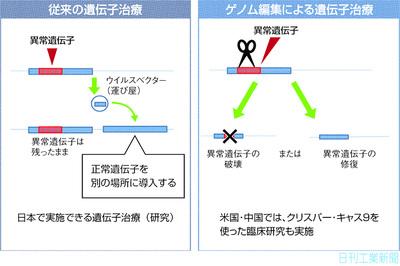Attraction and Concern of Deep Section/Genome Editing “Crisper Cass 9”
A repair function works at the cut site of DNA, but repair errors occur during repeated cutting by the same enzyme. Genome editing is characterized by making use of this error to make a gene lose its function, or by inserting a different nucleotide sequence into the cut site to modify the gene.
Crisper Cass 9 technology is based on Japanese research results. Yoshizumi Ishino, a professor at Kyushu University, discovered the characteristic base sequence "crisper" used in this technology. In 1987, Professor Ishino showed that characteristic sequences were regularly repeated in the DNA of archaea.

Later, this sequence was named CRISPR, and it was found that the sequence between CRISPR stores genetic information such as viruses that infected bacteria in the past. When a virus invades again, Cas-9 enzyme cleaves and attacks the pathogen-derived DNA based on the sequence conserved between CRISPRs. It works like acquired immunity in humans. CRISPR-CAS 9 was developed by applying the mechanism of recognizing and cleaving a specific sequence of bacteria.
Applications in Agriculture, Forestry and Fisheries - Strengthening the “Original Power” of Crops Instead of Genetic Modification
Application development of genome editing technology is progressing in crop breeding in agriculture, forestry and fisheries. We are also working on the Strategic Innovation Creation Program (SIP), a research support project in cooperation with ministries.
In general, consumers have strong concerns about genetically modified crops, but this is because they introduce useful genes that are not originally in the target crops and add new traits. However, in the case of genome editing, the flow is similar to the use of mutations caused by ultraviolet rays in crop breeding, and emotional resistance is weak.








